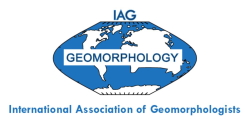Publication Types
Publication Types
Geomorphica publishes several types of manuscripts:
Original research articles
Original research articles present advances in scientific knowledge or understanding. These are typically from 3,000 to 10,000 words in length (excluding references, figure captions and tables), and can address any aspect of geomorphology within the journal’s scope (see above). Authors who have long articles of over 10,000 words that cannot be shortened should contact the Editor-in-Chief prior to submission to see if this can be accommodated.
Synthesis articles
Synthesis articles combine more than two earlier datasets/experiments, on the basis of which new scientific insights are obtained. Synthesis articles advance insights well beyond an extension of previous research articles with more data in that multiple field datasets, different models or experiments and combinations thereof. Authors who have long articles of over 10,000 words that cannot be shortened should contact the Editor-in-Chief prior to submission to see if this can be accommodated.
Cases studies and applied research
Case studies and applied research articles present innovative ways in which existing knowledge is implemented and/or adapted to address any aspect of geomorphology in specific contexts within the journal’s scope. The manuscripts should be based on rigorously acquired data and analysis, and their implications may be site-specific. Authors are encouraged to identify broad implications beyond the particular aspects of their study. Their structure should be similar to original research articles and also undergo thorough peer review. Case Studies and Applied Research are typically less than 6,000 words in length.
Reviews
Reviews are invited papers about a scientific idea, controversial topics and/or innovative concepts of 10,000 words in length.
Opinion articles and Comments
Opinion articles and Comments are short comments (maximum 1,000 words and 1 figure or table) on an original research article of the journal questioning on specific issues. Comments should not discuss original data nor include extensive reviews. Authors are encouraged to contact the Editorial Board with ideas of subjects.
Short communications
Short communications are matters of general interest to the community will be considered for occasional publication as Short Communication. Short Communications should be less than 3,000 words in length and contain no more than 3 figures or tables. Authors are encouraged to contact the Editorial Board with ideas of subjects, and the interest to the community needs to be explained in a cover letter to the Editor-in-Chief upon submission. Various types of Short communications are possible:
1) Novel methods, including Machine Learning,
2) Deployment of an instrument that will provide novel or large datasets,
3) Novel geomorphological maps of interest beyond its location,
4) Community science initiatives and involvement, and indigenous knowledge relevant to geomorphological projects,
5) Negative, inconclusive or failed results when these are of interest to the community.
The Short communication category of Negative, inconclusive or failed results where these are ignored in the scientific literature but are useful in advancing science, for instance, through highlighting difficulties in reproducing published results or by documenting the circumstances in which particular methods or approaches may be unsuccessful. Geomorphica is willing to consider one publication of null results per issue if and only if they are illuminating or instructive in the context of previous published studies. This category is not intended for papers rejected elsewhere. Null-result manuscripts should include brief sections on: the background to the study, methods, details of the null results, discussion of the null results in the context of previous work, and scientific and/or technical insights drawn from the null results. This last element is essential for a good null-result report – the insights presented there could serve as a scientific challenge to other scientific results in that field, the methods by which they were obtained or the generalisations made in previous studies.

 A publication of Penn State Libraries Open Publishing
A publication of Penn State Libraries Open Publishing
